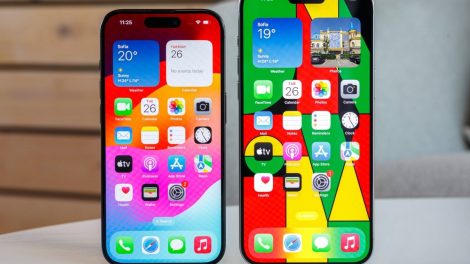Prepare yourself iOS loyalists because reports suggest 2024 may birth drastically diverging iPhone screen sizes tailored to niche buyers craving either unbridled pocket portability or visually engulfing digital canvas immersion.
Let’s weigh how a dramatic fork in iPhone display proportions caters to evolving consumer physical size preferences while forcing app designer adaptations.
Feasting Eyes or Fitting Jeans: The Display Dilemma
According to credible rumors, 2024 iPhone Pro models push screen sizes upwards by nearly half an inch – expect a 6.7 inch iPhone 16 Pro Max versus 2022’s 6.1 inch Pro sibling and corresponding enlarged standard sized Pro.
This suggests the iPhone fork divides into two screen species: more compact pocket-friendly Non-Pro units with familiar 6.1 and 6.7 inch industrial design or almost-tablet sized Pro leviathans sating big screen addictions.
Filling the Void of Vanishing Small Phone Options
By retaining sub-6 inch models while stretching Pro displays, Apple preserves a sanctum for diminishing compact smartphone demand in an almost universally swelling market. This ensures the 6.1 inch iPhone 16 becomes a lone shrinking bastion of truly effortless ambidextrous app navigation and TikTok scrolling.
Maximizing the Marketing Allure Behind Bigger and Badder
Meanwhile stretching Pro displays seduces spec hungry power users craving maximum touchable real estate for professional photography, video editing and even general content binging. After all, marketing hype championing bits, bytes and screen acres still wins sales.
Developer Headaches Hidden in Resizing Expanding Aspect Ratios
Of course, such dramatically diverging screen dimensions between iPhone families forces app creators to painstakingly tailor interfaces for both extremes – accommodating one-handed use cases in base models while preventing informational overload on Plus-sized panels by cleverly adapting layouts.
It takes considerable programming prowess navigating extremes. Whether Apple’s two-tiered iPhone path pays user dividends long term remains unseen. But their embrace of options balances consumer choice amidst smartphone homogenization. Stay tuned on sizing fallout!










Add Comment